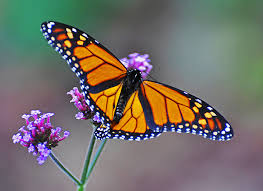7 Most Powerful Pests In The World & Why

Today’s pests have developed highly efficient ways to survive, and they can be very hard to get rid of. They lurk in wall cracks, breed at staggering rates, and evolve resistance to pesticides in only a few generations. Most ants live in organized colonies, attacking human structures and food sources en masse.
You can not underestimate the emotional impact on families who are dealing with means to be a long-term infestation. These uninvited guests are often accompanied by fatigue, anxiety, and social embarrassment. These kinds of considerations are better understood by pest control services professionals, who offer focused solutions to minimizing these issues both in the short and the long term.
Right here we are going to talk about powerful pests and how you can control them, in case they make their way to your home.
7 Powerful Pests You Need to Know About
1. German Cockroaches
The German cockroach, one of the most resilient and difficult-to-eliminate household pests, deserves its reputation due to its exceptional reproductive capabilities and ability to survive. An individual female can lay up to 400 offspring, and each generation can mature for as many as 36 days.
Their adaptability is significant: They can go without a meal for 30 days and last a week headless. They harbor more than 30 kinds of bacteria, including Salmonella and E. coli, and spread these germs to kitchen surfaces and food prep areas. Their flat bodies enable them to crawl through spaces as narrow as a dime; thus, eradicating them from the living environment is nearly impossible for unprofessionals.
2. Bed Bugs
Bed bugs have an uncanny knack for hiding and can withstand temperatures that would kill almost all other bugs. They are able to survive more than a year without feeding, at temperatures ranging from freezing to 122°F, and hide in cryptic locations, making detection challenging until populations reach levels that cannot be tolerated.
These parasites release anticoagulants and anesthetics as they feed, allowing them to ingest your blood unnoticed for a maximum of 10 minutes per blood meal. They are prolific breeders, and females lay as many as 500 eggs during their lifetime. Bed bugs also become resistant more quickly than other common household pests, necessitating unique treatment techniques.
3. Termites
Having achieved an incredibly sophisticated level of organization, termites will consume wooden construction materials from within, leaving little to no visible evidence of the damage until it is well advanced. Subterranean termites construct subterranean galleries that may extend several hundred feet and provide them with access to numerous elements of buildings.
A fully developed termite colony may consist of more than a million insects, all of which have defined roles in the destruction of wood.
4. Carpenter Ants
Carpenter ants are like termites, with leaders of one of the most advanced social insects. Unlike termites, they do not eat wood, but they do create vast galleries and tunnels that, over time, can seriously weaken milled timber in structures.
5. House Mice
House mice are very adaptable and intelligent, and can be found in nearly any human-created environment. They multiply quite handily, with females having 4-8 young in each of up to 10 litters each year!
6. Norway Rats
Norway rats possess great intelligence and powerful physical bodies, which is why they are worthy adversaries in pest control battles. They can leap three feet vertically, scale rough surfaces, and slip through a quarter-sized opening.
These are not solitary animals but rather live in complex social groups with their pecking orders and ways of communicating. They exhibit neophobic behavior and steer clear of new objects and food items until a colleague has sampled them.
7. Pharaoh Ants
Pharaoh ants have a biology that is different from most other ants, which allows them to avoid death from typical ant treatments easily. When they feel threatened, their colonies fragment, a process known as budding, which can lead to several new infestations within buildings.

